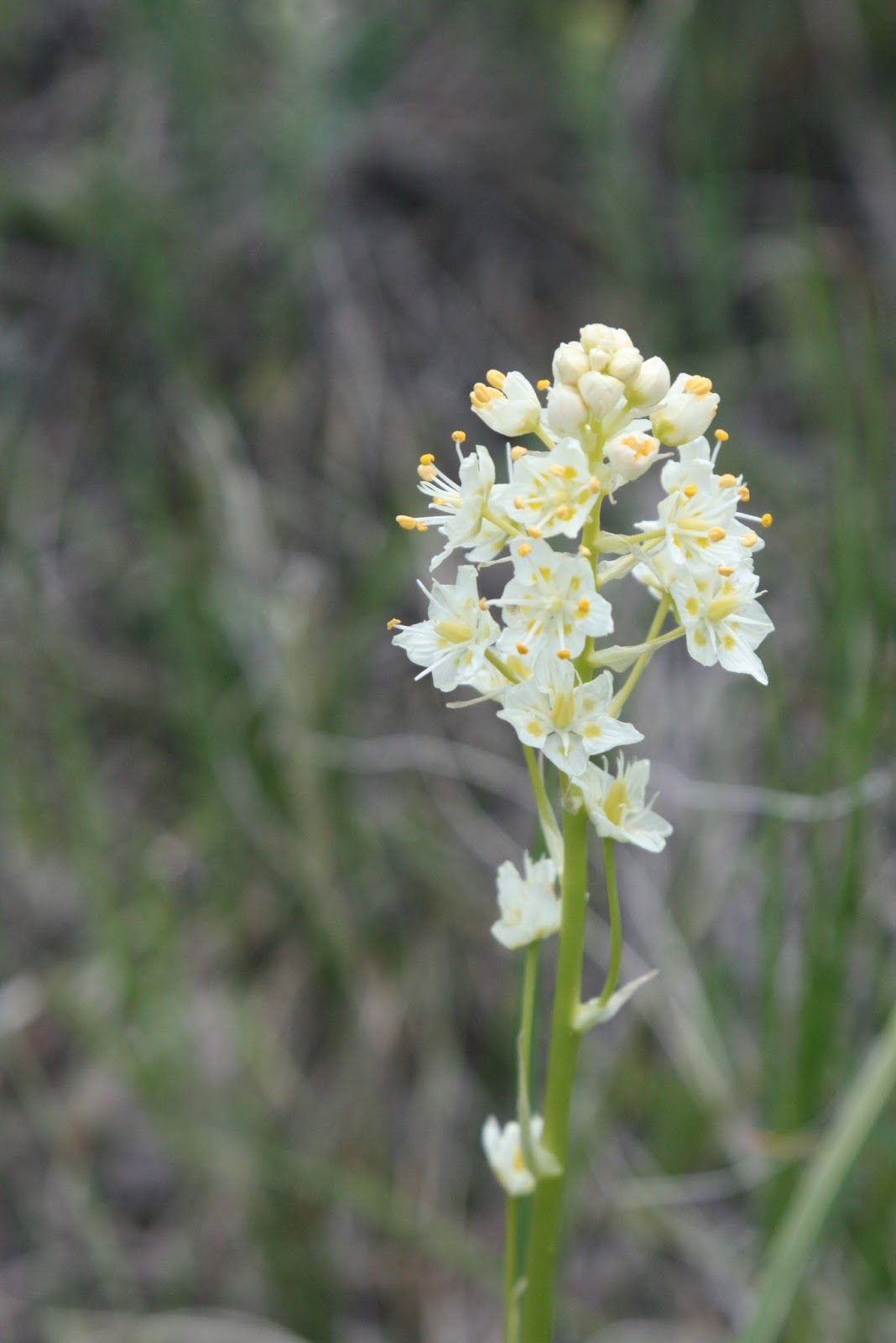The term monocot refers to the way the plant starts growing. When you picture the beans or morning glories coming up in your garden, the first leaves (or cotyledons) that grow from the stem are in pairs. That's a dicot--two cotyledons. The monocots have only one leaf that comes out of the seed--like a grass. Lilies, onions and grass all grow that way. In addition, when their leaves are larger they are long and have veins that are parallel to the length of the stem. Dicots can have really complicated leaf structures--picture an oak or maple leaf.
I've talked about Sand Lilies (Leucocrinum montanum), one of the harbingers of Spring (See April 13 entry). Last week I saw a less common, but really cool little lily blooming--Meadow Death Camas (Toxicoscordion venous). I've never seen these near a trail, always in the untrammeled meadows on the mountain. As the name implies, they are poisonous, but pretty little flowers.
 |
| Death Camas (Toxicoscordion venous) |
 |
| Wild Onion (Allium textile) |
No comments:
Post a Comment